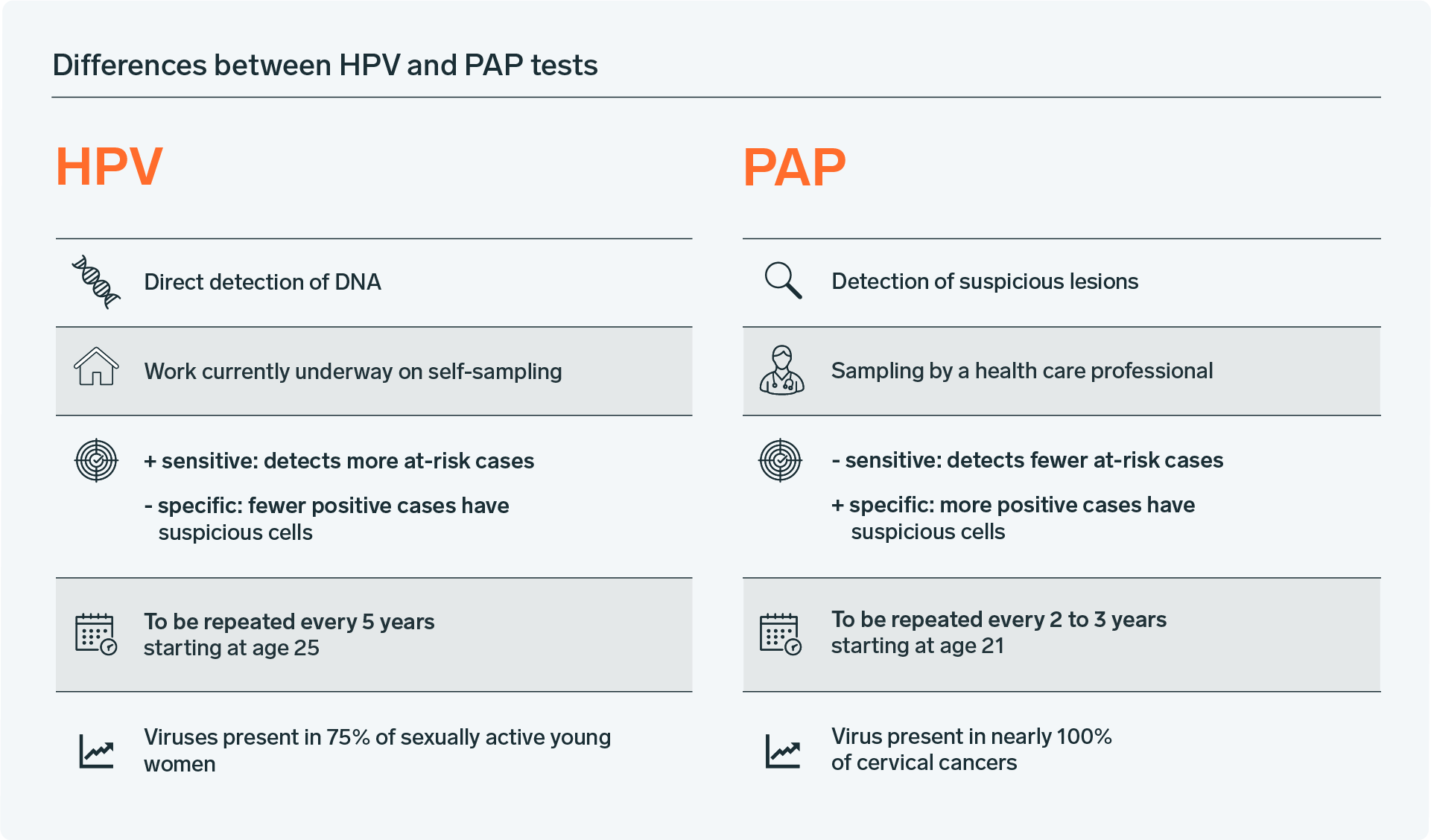Your Questions — 11 minutes
What are the differences between the HPV test and Pap test?
The test used to detect the human papillomavirus (HPV test) will gradually become the primary screening test for cervical cancer in Quebec. This test is more effective than the traditional Pap test and has other advantages, despite certain limitations. Here’s an overview of the differences between the two tests.

Type of analysis
The HPV test uses molecular technology to detect human papillomavirus DNA, including the genotypes most likely to cause cervical cancer (HPV-16 and HPV-18). The Pap test uses a microscope to analyze cell morphology to detect abnormalities that could progress to cancerous lesions.
Sensitivity and specificity
With a sensitivity of 94.6%, the HPV test detects 40% more at-risk cases than the Pap test, which has a sensitivity of 55.4%. However, the Pap test is more specific: 97% of patients with a positive Pap test have suspicious cells and must therefore undergo a colposcopy. [1-2]
The HPV test detects the presence of the virus even if there are no abnormalities or lesions. As a result, if genotypes other than HPV-16 or HPV-18 are detected, patients are advised to have a Pap test in order to avoid unnecessary colposcopies.
For decades, these tests have been the mainstay of Quebec’s cervical cancer screening program. The problem is that the Pap test is not as effective as the HPV test, which was made possible by the development of DNA analysis technologies in the 1980s.
Accessibility
Contrary to a Pap test, which requires a cervical swab in a clinic, an HPV can be done from a vaginal swab, making self-collection possible. Work is currently underway to make this type of sampling available.
Learn more about this Biron's screening tests (HPV test and PAP test)
Frequency of screening
An HPV test should be done every five years starting at age 25, while the interval for a Pap test is two to three years starting at age 21.

For professional support, we’re here.
We provide services that can help your doctor detect uterine cancer and determine the appropriate treatment.
- Gynecological Cytology
- HPV molecular detection test
- Gynecological cytology cascade
- Molecular HPV cascade
Make an appointment online or contact Biron Health Group’s customer service at 1-833-590-2712.
Sources2
- Mayrand, M. H., E. Duarte-Franco, I. Rodrigues, S.D. Walter, J. Hanley, A. Ferenczy et al. “Human papillomavirus DNA versus Papanicolaou screening tests for cervical cancer”. New England Journal of Medicine, Vol. 357, No. 16, p. 1579-1588, 2007, https://www.nejm.org/doi/full/10.1056/nejmoa071430
- Nanda, K., D. C. McCrory, E. R. Myers, L. A. Bastian, V. Hasselblad, J. D. Hickey and D. B. Matchar. “Accuracy of the Papanicolaou test in screening for and follow-up of cervical cytologic abnormalities: A systematic review”. Annals of Internal Medicine, Vol. 132, No. 10, p. 810-819, 2000, https://www.acpjournals.org/doi/10.7326/0003-4819-132-10-200005160-00009








